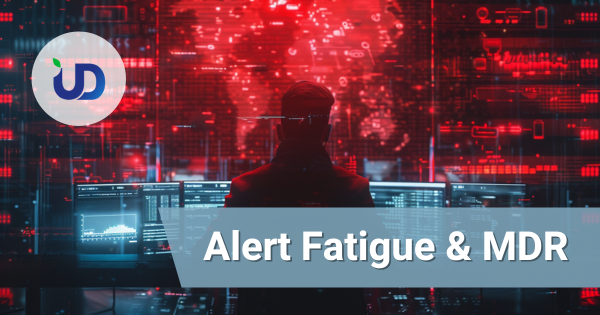Alert Fatigue in Cybersecurity: Why It Happens and How Managed Detection & Response (MDR) Breaks the Cycle
Alert fatigue has quietly become one of the most damaging issues inside modern Security Operations Centers (SOCs). With cloud services, remote work, SaaS sprawl, and microservices expanding an organisation’s attack surface, security tools are generating more alerts than ever before. Ironically, the same tools meant to protect businesses are overwhelming the security teams operating them.
This fatigue is exactly why attackers are finding it easier to slip through unnoticed.
When organisations don’t address alert fatigue, security analysts become desensitized, overwhelmed, and prone to overlooking truly dangerous signals. This creates the perfect environment for stealthy breaches, ransomware deployment, phishing-based account takeovers, and lateral movement inside internal networks.
Understanding the Root Cause of Alert Fatigue
Alert fatigue happens when security teams are bombarded with thousands of notifications every day. The majority of alerts generated by SIEMs, EDR, cloud platforms, firewalls, and vulnerability scanners are either low-severity or repetitive. Over time, analysts lose the ability to distinguish real threats from background noise.
This problem becomes worse when organisations rely on too many disconnected tools. A typical environment may have a SIEM, multiple endpoint tools, cloud workload protection, WAFs, IAM alerts, and third-party SaaS notifications—each generating alerts in its own format, frequency, and priority.
As the workload increases, security teams become stressed and mentally drained. Threats that require immediate response end up buried in a sea of false positives, causing delayed investigations or missed incidents entirely.
Why Hackers Love Alert Fatigue
Hackers know exactly how overwhelmed SOC analysts are. In fact, many sophisticated attacks are built around exploiting this weakness intentionally.
Attackers often begin with noisy, low-risk activities—port scans, login attempts, or permission checks. They do this to increase alert volume, creating noise that blends in with everyday logs. Once the SOC becomes accustomed to high alert volumes, a real intrusion appears no different from the rest.
Some attackers purposely create small distractions, such as triggering harmless alerts, while the real compromise happens elsewhere.
This technique is especially common in targeted ransomware operations.
Alert fatigue reduces a SOC’s reaction time. And when reactions slow down, lateral movement becomes easy. Credentials are stolen quietly. Cloud privileges escalate without detection. And exfiltration begins before the business realises anything is wrong.
This is why alert fatigue isn’t just a productivity problem—it becomes a direct security vulnerability.
How Managed Detection & Response (MDR) Breaks the Alert-Fatigue Cycle
Rather than relying solely on internal staff, many organisations are turning to Managed Detection and Response (MDR) services to solve alert fatigue at its root.
An MDR team filters, correlates, and validates alerts before they reach your IT department. This eliminates noise while only escalating real threats that require action.
Unlike traditional SIEM monitoring, MDR combines human analysts, automation, and threat intelligence. By correlating logs across multiple systems, MDR reduces false positives dramatically. If hundreds of events point to a single suspicious behaviour, MDR detects the pattern and sends one actionable alert instead of dozens of fragmented notifications.
24/7 monitoring ensures no incident slips through during weekends, after-hours, or holidays. Even complex multi-stage attacks become easier to detect because MDR analysts recognise patterns and behaviours, not just isolated events.
For many organisations, MDR becomes a force multiplier—giving small IT teams enterprise-grade protection without stretching their workload.
The Role of Automation and AI in Reducing Alert Noise
Modern MDR services combine automated triage with AI-powered correlation to reduce the number of alerts analysts need to investigate.
AI isn’t replacing humans, but it does the heavy lifting. It can group related alerts, identify abnormal behaviour based on historical patterns, and highlight anomalies that deserve immediate attention.
Meanwhile, human experts validate findings, respond to threats, and provide guidance. This hybrid approach ensures that alerts are not only reduced—but transformed into high-confidence signals that matter.
By cutting down the noise and elevating true threats, organisations drastically improve their security posture without hiring large SOC teams.
How Your Organisation Can Eliminate Alert Fatigue Starting Today
Solving alert fatigue starts with acknowledging that internal teams cannot—and should not—handle everything alone.
Start by consolidating your security tools where possible. Reduce duplicated alerts generated by overlapping systems. Ensure that threat detection rules are tuned, not left at default configurations.
Then, complement your internal team with an MDR provider. This combination gives organisations the ability to stay secure without burning out employees or missing critical signs of compromise.
With managed detection, security teams regain control. Alerts become meaningful again. And organisations stop giving attackers the advantage of chaos and distraction.
Final Thoughts
Alert fatigue is one of the most underestimated cybersecurity threats today. It creates blind spots, slows response times, and gives attackers a silent path into your systems.
But with the right detection strategy—especially a modern MDR setup—companies can transform overwhelming noise into clear, actionable intelligence.
This shift doesn’t just reduce burnout. It strengthens your entire security posture and ensures attacks are stopped before they become full-scale incidents.
🛡️ Ready to Strengthen Your Security?
UD is a trusted Managed Security Service Provider (MSSP)
With 20+ years of experience, delivering solutions to 50,000+ enterprises
Offering Pentest, Vulnerability Scan, SRAA, and a full suite of cybersecurity services to protect modern businesses




